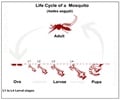Signs and Symptoms
Only about 50 percent of all people infected with C. burnetii show features of clinical illness. The other 50 percent may show no clinical features. Most patients become ill within 2 to 3 weeks after exposure.
Most cases of acute Q Fever begin with one of the following:
- High fevers (up to 104–105°F)
- Severe headache,
- General malaise
- Myalgia (Pain in a muscle or group of muscles)
- Confusion
- Sore throat
- Chills
- Sweats
- Non-productive cough
- Nausea
- Vomiting
- Diarrhoea
- Abdominal pain
- Chest pain
- Weight loss
Thirty to fifty percent of patients develop pneumonia. Hepatitis may occur in some. Majority of the people have abnormal liver function test results. Even without any treatment Q Fever resolves within several months and 1–2% people may die.
Chronic Q Fever, an uncommon entity, is one that persists for more than 6 months. It is more severe. The chronic form may occur within a year after initial infection. The time lag to develop chronic disease may be as long as 20 years.
Chronic Q Fever may result in serious complications like involvement of cardiac valves (commonly the aortic valves and rarely the mitral valve), that is, endocarditis and hepatitis.
People at risk of developing Q Fever are:
- Those with pre-existing valvular heart disease
- Ones with a history of vascular graft
- Transplant recipients
- Patients with cancer
- Those with chronic kidney disease
Up to 65% of persons with chronic Q Fever may die of the disease. People who survive Q Fever will possess lifelong immunity against re-infection.
Q Fever compromises pregnancy. An infection during early pregnancy may lead to abortion. A later infection may cause fetal death, prematurity or at times result in an uneventful normal delivery. Patients infected during pregnancy develop chronic infection of the uterus and this leads to multiple abortions in the future.















